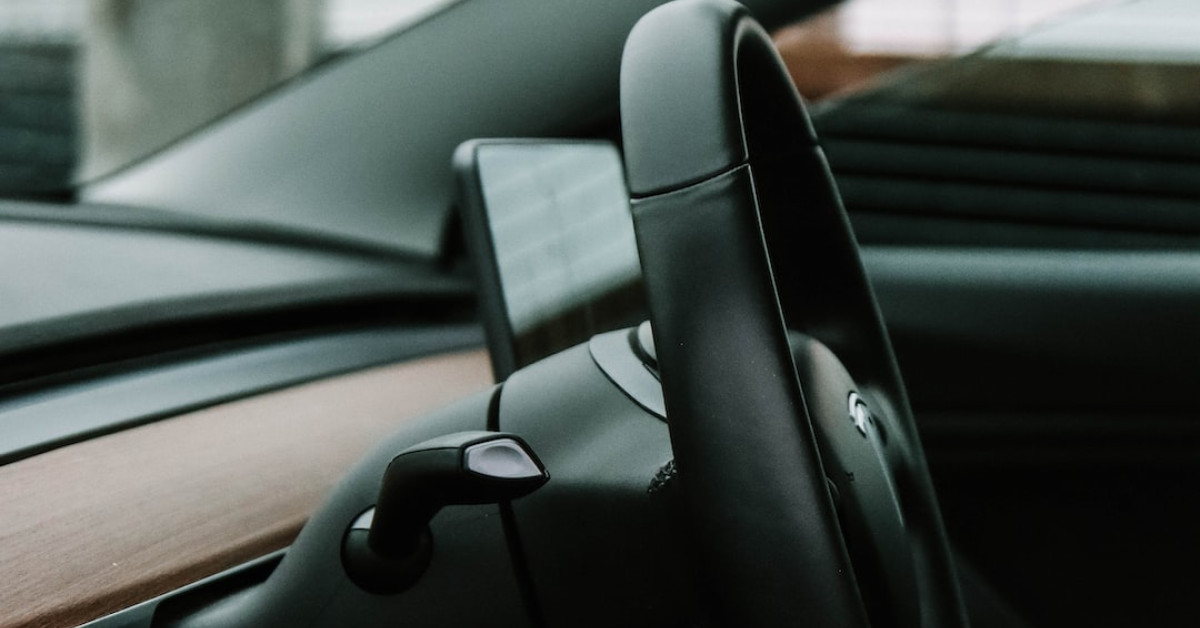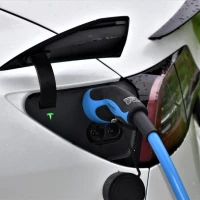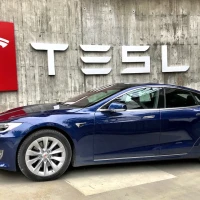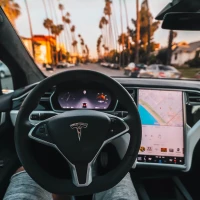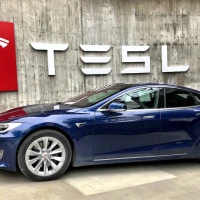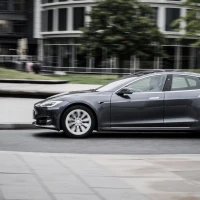In the race to electrify our roads, the battery is undeniably the heart of any electric vehicle (EV). It’s the game-changer, the make-or-break component that determines range, efficiency, longevity, and overall performance. Among the frontrunners in this technological tour de force is Tesla, a company that has not just dipped its toes but dived headfirst into the realm of battery innovation. In this comprehensive deep dive, we pit the Tesla battery technology against its burgeoning competition to see how it truly fares in the rapidly evolving EV landscape.
Tesla, a company synonymous with cutting-edge EV technology, has long been setting bench-marking standards with its battery capabilities. These proprietary batteries not only promise exceptional energy capacity but also boast advanced thermal management systems that are crucial for optimizing battery performance and lifespan. But how do industry rivals stack up in this energetic showdown? Let’s charge into the details.
Unveiling the Powerhouse: Tesla’s Battery Tech Explained
Tesla has revolutionized the electric vehicle battery segment, and it’s imperative to understand what sets its batteries apart before comparing them with others. Here’s a detailed look at Tesla’s battery innovations:
The Chemistry of Success: Tesla’s Battery Composition
Tesla’s batteries are known for their unique blend of chemistry. They utilize nickel-cobalt-aluminum (NCA) for most of their lineup, striking a balance between energy density and safety. Notable is their shift towards an even more innovative nickel-manganese-cobalt (NMC) chemistry in certain models, which offers longevity and reduced costs.
Maximizing Energy: The Cells and Modules
At the core of Tesla’s battery technology are the cylindrical cells, specifically the 2170 cells, which have become synonymous with Tesla’s energy revolution. These cells are packaged into modules that comprise the overall battery pack, enabling a modular approach to power management and replacement.
Advanced Thermal Management
Tesla’s thermal management system is a key ingredient in its secret sauce. Using a mixture of liquid cooling and innovative software, Tesla ensures its batteries operate within the optimal temperature range, ensuring longevity and reducing the risk of thermal runaway.
The Software Synergy
Tesla is not just about hardware; its software plays an equally pivotal role. With constant updates and meticulous monitoring, Tesla’s software optimizes battery usage and extends the battery life cycle.
The Contenders: Assessing the Competition
To truly gauge the Tesla battery’s prowess, let’s explore the current competitors in the EV battery market and how their offerings compare:
The LG Chem Insight
LG Chem, a South Korean giant in battery manufacturing, produces lithium-ion batteries that are notable for their safety and stability. Their among others composition extends across various chemistries, but primarily they focus on NMC and are a go-to supplier for many automotive brands.
Samsung SDI’s Advanced Offerings
Samsung SDI, another South Korean powerhouse, specializes in providing batteries with high energy density and extensive longevity. Similar to LG Chem, they too focus on advanced NMC technology tailored to the needs of modern EVs.
CATL’s Lithium Iron Phosphate (LFP) Innovation
Contemporary Amperex Technology Co. Limited (CATL) from China has made a name for itself with its LFP batteries. Known for their safety and cost-effectiveness, these batteries offer a different value proposition, focusing on long-term reliability rather than outright energy density.
The Pioneering Spirit of Panasonic
Panasonic, a long-time collaborator with Tesla, is a veteran in the battery manufacturing space. They have worked closely with Tesla in the creation of 2170 cells and continue to explore new frontiers in battery technology with an emphasis on reliability and performance.
Comparing Battery Capacities and Efficiencies
When analyzing EV batteries, two of the most critical metrics are capacity and efficiency. Let’s examine how Tesla’s batteries measure against competitors in these key areas:
Energy Capacity: Range and Storage
- Tesla’s batteries are celebrated for their high energy capacity, translating directly to longer ranges on a single charge.
- Competitors such as LG Chem and Samsung SDI also offer significant energy capacities but often at the expense of increased weight and size.
- CATL’s LFP batteries provide a larger cycle life, even if their energy content is lower, positioning them as a reliable alternative for urban commuting vehicles.
Energy Efficiency: The Pursuit of Perfection
- A hallmark of Tesla batteries is their energy efficiency, giving Tesla vehicles an edge in converting stored energy into drivable miles.
- LG Chem and Samsung SDI have been pushing the boundaries of their respective technologies to catch up in this efficiency race.
- Panasonic, propelled by its partnership with Tesla, continues to enhance energy retention and output, showcasing flagship levels of battery efficiency.
Thermal Management: Keeping the Heat at Bay
A battery’s thermal management system ensures performance is maintained without compromising safety. Let’s see how Tesla’s system compares to its rivals’:
Tesla’s Liquid-Cooled Legacy
- Tesla’s advanced liquid cooling system ensures batteries maintain optimal temperatures, which is especially vital during fast charging scenarios.
- Active thermal management is key to sustaining battery health and is a standout feature of Tesla’s EV architecture.
Competitor Cooling Techniques
- LG Chem and Samsung SDI have also implemented sophisticated cooling solutions, although these may vary depending on the manufacturer they supply to.
- CATL’s LFP technology inherently deals better with heat, requiring less complex thermal management systems.
Lifespan and Longevity: The Durability Duel
The life expectancy of an EV’s battery is a major concern for potential buyers. Here’s how Tesla’s longevity compares with the competition:
Tesla’s Mileage Mastery
- Tesla promises a lifespan of over 1 million miles for its battery packs, positioning itself as a leader in durability.
- With regular software updates and a dynamic warranty, Tesla ensures its batteries’ value proposition ages gracefully.
Close Contenders in Longevity
- CATL’s LFP batteries are benchmarked for extensive cycle lives, which could even surpass the durability Tesla boasts.
- LG Chem and Samsung SDI are in hot pursuit with promises of longevity owing to their rigorous standards and quality control measures.
- Panasonic continues to leverage its sturdy reputation, ensuring that its batteries withstand the test of time and usage.
Sustainability and Recycling: The Eco-Friendly Face-Off
In an era where green credentials are pivotal, how do Tesla batteries fare against competitors in terms of sustainability and end-of-life solutions?
Tesla’s Green Endeavors
- Tesla is actively working towards a closed-loop battery recycling system, ensuring minimal waste and maximum resource recovery.
- The shift towards using fewer rare earth metals in battery chemistry exemplifies Tesla’s commitment to reducing mining impacts.
Competitor Environmental Strategies
- Companies like LG Chem and Samsung SDI have established various recycling initiatives, often recycling old batteries into energy storage systems.
- CATL’s LFP batteries contain no cobalt, giving them an intrinsic advantage in terms of ethical sourcing and sustainability.
Conclusion: Tesla’s Dominant Edge or a Narrowing Gap?
Tesla’s innovative spirit and relentless focus on advancement have carved themselves a dominant position in the electric vehicle battery landscape. From their sophisticated thermal management and energy-efficient cells to their proactive approach to software integration and sustainability, Tesla’s batteries are a tough act to follow. Yet, as the conclusion of this Tesla battery showdown reveals, the competition is fiercely accelerating, with industry heavyweights like LG Chem, Samsung SDI, CATL, and Panasonic making significant strides. These developments promise an electrifying future where consumers will be the ultimate winners, benefitting from a plethora of power-packed choices in their quest for the perfect electric vehicle.
As the EV revolution continues to charge forward, the narrative is clear: Tesla has set a benchmark that’s influencing the entire automotive industry. However, with technological advancements and innovation being inherently unpredictable, one can only wonder how much longer Tesla can maintain its position at the front of the pack, or will the gap indeed narrow, leading to a new chapter in the electrification tale?
In the heated contest of Tesla battery vs. others, it is not just about who currently leads the pack; it’s about the sustained innovation and adaptation to meet the demands of a world inching closer to total electrification. With the market expanding and consumer awareness growing, the competition is bound to get tighter, challenging Tesla to continue evolving or risk being outpaced by the very competitors it inspired.

